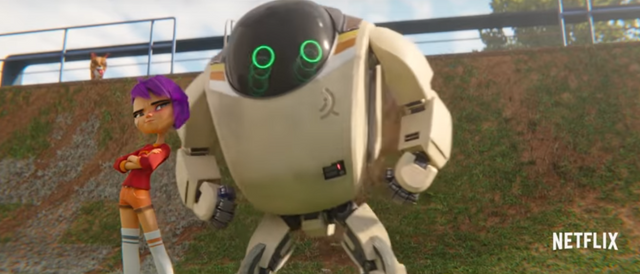The New Netflix Animated Movie NEXT GEN Was Made With Blender!
Just a couple of days ago, I wanted to watch something light and relaxing. And animated movies are just the thing for that. I scrolled trough the Netflix library and find one. NEXT GEN. First time I heard about it. Ok let’s give it a go.
source
I watch the entire movie, having a good time. The movie had a story, a gorgeous effects and nice ending. And while watching it I was thinking. Who knows what this guys used to create this movie. An army of people using the latest high tech. Maybe even motion tracking systems for characters etc.
I have been using Blender for a couple of years now. Mainly as free time hobby. I love the creative freedom that it gives. And all of this for free. Just use it. I have been working mainly on sculpting 3d models, and just in the last month or two I started experimenting with animations.
Watching the movie, I was thinking. Man it will be very hard to do this in Blender. And just yesterday I found out that this movie in fact is made in Blender! I was amazed. Way to go Blender. We now have a Hollywood style animated movie in Blender on Netflix. There is not much where to go from here. Blender has reached the standards of all those others costly software.
Here what the cofounder of the animated studio had to say:
As people surmised, this is indeed 100% Blender for the core work, including Cycles for all rendering, supplemented with other software in a few areas, specifically:
Substance Painter and Photoshop were used for a good chunk of the surfacing and texturing work, with Blender paint tools used for the balance
Houdini and Fume FX were used to generate VDB and Alembic data for import and render in Cycles. Stefan Werner and Luca Rood (who did a fantastic job on improving the cloth sim in Blender that was used heavily in NextGen) worked on adding proper support for VDB voxel data, and improving the Alembic support, including importation and exposing attribute data for use in Cycles material networks
On the development side:
Stefan also did some incredible work on volumetric rendering efficiency, adding the Intel Embree core to Cycles, and generally improving the Cycles renderer for user on NextGen. Render times were extremely reasonable and manageable, even with full 3D blur and in-camera DOF used throughout the film
We added a number of other features to Blender to benefit the film, such as support for Cryptomattes (we render everything in camera, so Cryptomattes are a godsend in compositing), improved animation features, and a variety of other features in various areas of Blender
Tangent itself has never been a Maya studio, though a previous incarnation of the studio used Maya. I was one of the first animators to work on Maya at the R&D phase back in 1994-1998, and I’ve utilized Maya as the core piece in 5 different pipelines in various studios, so to switch to Blender is a big deal for us. The ability to redirect spending from commercial software to custom development is huge for our projects.
This is a real life proof for the success of the open source community. Blender has been round more than a decade now. The development is done by a hundred of developers. It continue to improve more and more over time and now is in the ring with all the heavy weight in its category. At the same time it empowers thousands of individuals all over the world to enter this world of creativity.
I hope that the open source economy will continue to flourish and improve people everyday life.
All the best
@dalz

blender is great,I definitely will see this movie.
Posted using Partiko Android